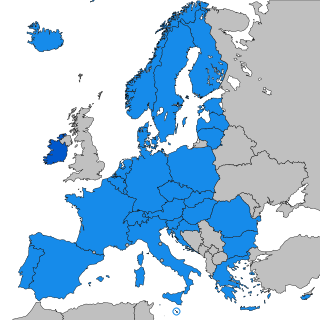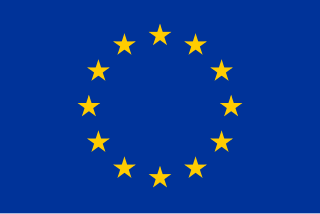 W
WThe Schengen Area is an area comprising 26 European countries that have officially abolished all passport and all other types of border control at their mutual borders. The area mostly functions as a single jurisdiction for international travel purposes, with a common visa policy. The area is named after the 1985 Schengen Agreement signed in Schengen, Luxembourg.
 W
WThe Schengen Agreement is a treaty which led to the creation of Europe's Schengen Area, in which internal border checks have largely been abolished. It was signed on 14 June 1985, near the town of Schengen, Luxembourg, by five of the ten member states of the then European Economic Community. It proposed measures intended to gradually abolish border checks at the signatories' common borders, including reduced-speed vehicle checks which allowed vehicles to cross borders without stopping, allowing residents in border areas freedom to cross borders away from fixed checkpoints, and the harmonisation of visa policies.
 W
WThe Entry-Exit-System EES - or Entry/Exit System (EES) - is a large-scale IT system planned by the European Union for the automatic monitoring of the border-crossing of third-country nationals. Envisioned to replace passport stamps, the system will be installed at the external border crossing points of the Schengen Area, e.g. airports and seaports. As of April 2020, EES is scheduled to enter into operation sometime in the first quarter of 2022. EES will be based on the EU-Regulation 2017/2226.
 W
WThe Schengen Information System (SIS) is a governmental database maintained by the European Commission. The SIS is used by 31 European countries to find information about individuals and entities for the purposes of national security, border control and law enforcement since 2001. A second technical version of this system, SIS II, went live on 9 April 2013.
 W
WThe Open Balkan is an economic and political zone of three member states in the Balkans, including Albania, North Macedonia and Serbia. The zone has a total area of 131,935 km2 (50,940 sq mi) and an estimated total population of about 11 million. The official languages are Albanian, Macedonian and Serbian. Its administrative centres are the cities of Belgrade, Skopje and Tirana. With the establishment of the zone, all three member states aim to increase trade and co-operation as well as improve bilateral relations.
 W
WPM-International AG is a manufacturer of dietary supplements and cosmetics based in Schengen (Luxembourg).
 W
WEuropean Travel Information and Authorisation System or ETIAS is an electronic authorisation system of the European Union for visa-exempt visitors travelling to the European Union or the Schengen Area, with the exception of Ireland, which is a member of the Common Travel Area.
 W
WThe visa policy of the Schengen Area is set by the European Union and applies to the Schengen Area and to other EU member states except Ireland. The visa policy allows nationals of certain countries to enter the Schengen Area via air, land or sea without a visa for stays of up to 90 days within a 180-day period. Nationals of certain other countries are required to have a visa either upon arrival or in transit.